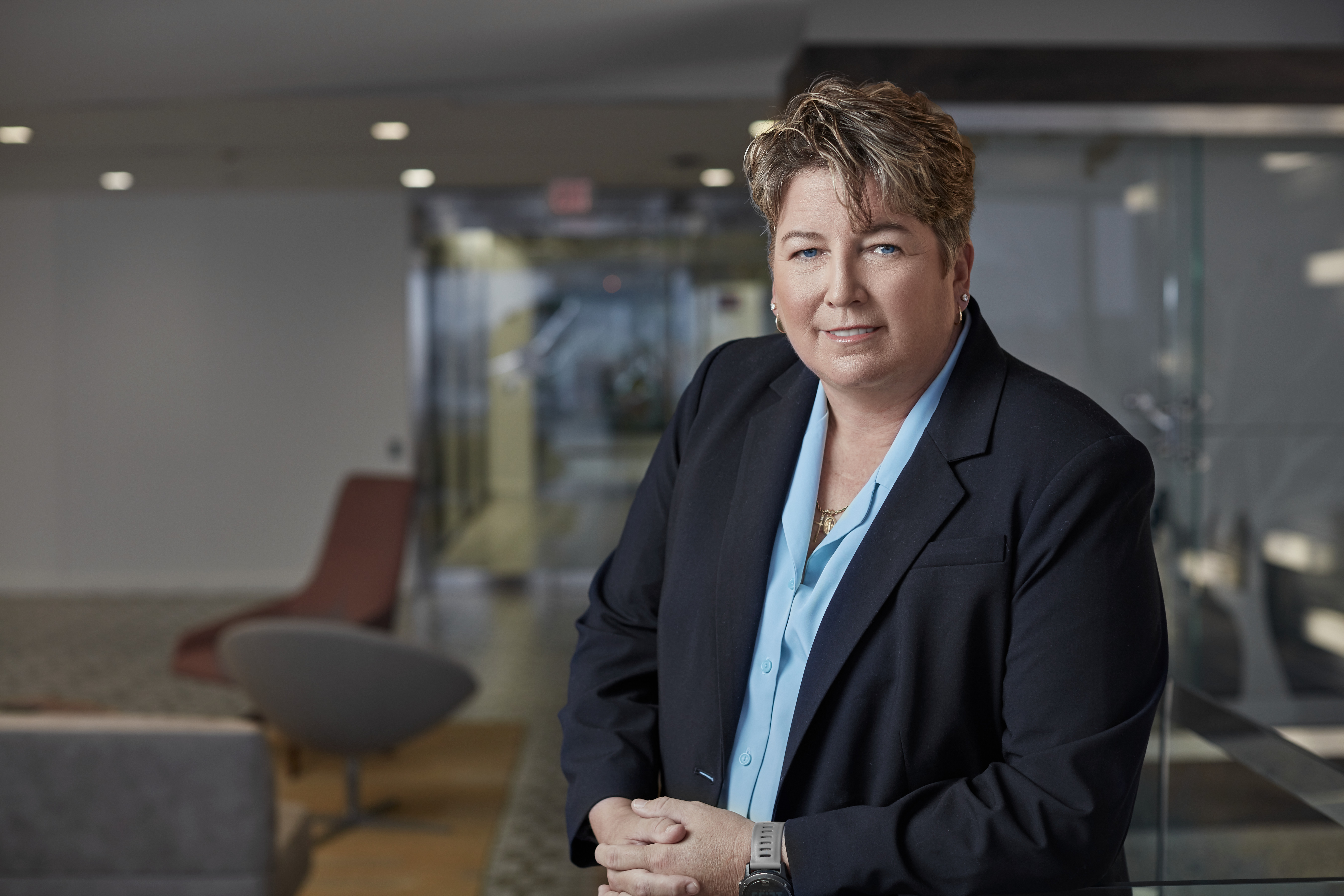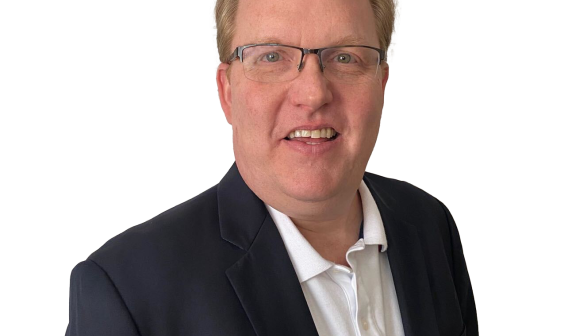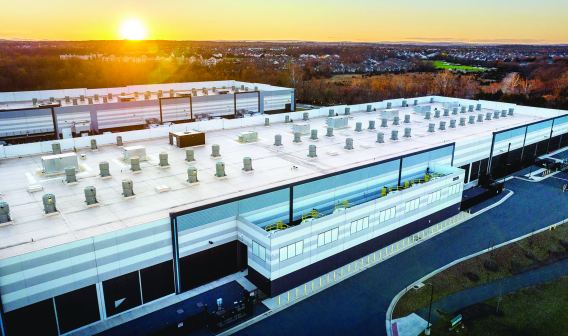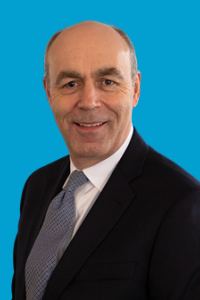The Evolution of Cloud Computing
A Conversation With Susie Adams
Susie Adams is chief technology officer for federal government business at Microsoft. She oversees and implements the technical strategy for the technology giant’s Department of Defense, civilian, and intelligence community businesses. VEDP President and CEO Stephen Moret spoke with Adams about data centers, Big Data, and the future of cloud and edge computing.
Stephen Moret: When you think about Microsoft’s data center and Southern Virginia, do you have any sense of why that location was attractive to the company?
Susie Adams: I will tell you Boydton is extremely impressive. There are two main power feeds that are both very green-friendly. There’s hydropower and nuclear power. The town of Boydton is actually very small, with a population of around 400 people. We created 300 new jobs just in Mecklenburg County as of January 2019. It was a unique opportunity for us.
The way we look at data centers is unique because we think in terms of generations. As we build a data center anywhere in the world, we learn from how that particular data center operates and we improve on that innovation in the next generation. If you tour the data centers, you can see that evolution. There are no raised floors, for example. We’ve won several awards for some of our data center work.
The one in Boydton is literally sitting on concrete slabs. There’s a hot and a cold aisle, and it has what looks like aircraft engines blowing in air from the outside. The data center actually runs in the summer much hotter than a traditional data center. It’s like a swamp-cooler effect, where hot air gets pushed up through the ceiling. It’s a very different way of looking at things.
Moret: I always thought of them as being similar, but you’re describing innovations in the building itself.
Adams: They’re all very different. They don’t look the same. Some of our data centers, due to their locations, are four and five stories high. Some are two. Some are modular. We actually put a data center at the bottom of the ocean to see how that would work.
We try a lot of different things from an innovation perspective just to see what works. How energy-efficient can we get our data centers by the standard of power usage effectiveness (PUE)? We met our goal globally of 1.2 PUE, where 1 is the ideal power usage effectiveness. I won’t say it’s an industry standard, but it is a way that most data center providers look at how efficiently they’re running a data center from a power perspective.
Moret: What are some fields you see as key pipelines to work for a company like Microsoft in the cloud space?
Adams: There’s a wide variety of roles inside Microsoft for people with all kinds of backgrounds. If we look at where the IT industry is going with cloud computing, most people are very comfortable now with the concept.
The next question is how do we take the fact that it’s pennies on the dollar to host limitless data in a cloud and apply artificial intelligence and machine learning to that data to democratize AI?
The cloud is what’s enabling this innovation too. The opportunities there are limitless. Imagine if a data scientist could simply go into a tool and use dropdown menus to choose machine learning algorithms that have already been tested by other data scientists and not just engineers essentially democratizing data science. You could even give this capability to citizen scientists or employees who don’t have a data science background.
I tell my nieces and nephews, if you want to get a great job in computers these days, go into cybersecurity or data science. We don’t have the human capital we need as a country to be able to excel here.
We’re playing around with some really cool technology right now, using AI for translation services, and we have a project called InnerEye. It’s a research project that employs AI and machine learning to build innovative tools for automatic, quantitative analysis of three-dimensional radiological images to figure out where a cancer tumor is and delineate where the organs are relative to the tumor. You have an X-ray, MRI, or CT scan, and a human radiologist looks at that. What if you could use artificial intelligence through InnerEye to assist the doctor and augment their capability to help them deliver the radiation to the exact target, sparing organs from needless radiation.
From a cybersecurity perspective, you start to look at how a combination of AI and Big Data science can augment a cybersecurity professional’s daily activities. The big thing here is being able to look at all the telemetry that’s coming from all the systems. Not just the network, not just NetFlow data, but all telemetry from every device. Your watch, phone, refrigerator — everything is a sensor these days. You’ll be able to start seeing anomalies and trends you normally wouldn’t. I think the next big trend will be an uptick in these capabilities to help us better secure our data and use that technology for good to augment human capacity.
And then there is quantum computing. I’m not sure exactly how far we are as an industry from that. We’re working on quantum computing ourselves at Microsoft. But just imagine, computers today rely on 1s and 0s. Each bit has to be a 1 or a 0. With qubits, you can have both states at once. What this means is you can do calculations in minutes or hours that would today take a lifetime to compute. The innovation we are seeing today has all been enabled by the cloud and hyperscale computing.
Moret: It seems as if computer science made the biggest single talent pipeline into hardcore tech jobs. But data science is definitely on its heels. It feels like absolute demand compared to computer science is not as large, but it’s growing much faster, perhaps. Does that resonate?
As we build a data center anywhere in the world, we learn from how that particular data center operates and we improve on that innovation in the next generation.
Adams: It does. It takes unique talent and desire to want to do that, very similar to any engineering role. Think about processing sonar or radar. They use MATLAB today to create machine learning algorithms, and then run them on computers that take weeks to generate a model. Now you’ll be able to do this literally in minutes and train these models over and over again effortlessly.
The other interesting trend is wanting to extend the cloud to the edge. It’s great that we have cloud computing capabilities today, but the world is still disconnected. How do I take a machine learning model hosted in the cloud and put it on a device on the edge so we can look at and analyze that data in real time? Think of a national disaster like a large fire. Firefighters are on the ground gathering real-time data and they want to know exactly where that fire will go next. If they had the AI and machine learning capabilities on an edge device in the field they could easily plug this into the model and get a much better readout of what’s happening.
Moret: Getting into data science as a big growth opportunity for Microsoft, I’m interested in what you think about that. Secondly, the decision for the company to make open-source software a big focus as well.
Adams: It’s funny. When I joined Microsoft, everybody thought Microsoft wasn’t an open-source company, but we were already doing a lot in the open-source community. Open source is a critical part of Microsoft’s mission today. Our cloud services support most open-source software, our devices run open-source software and our engineering teams regularly contribute to open-source projects. It’s throughout our data centers, not just at the software layer, but at the hardware layer as well. It’s hugely beneficial. The same is true for big data and artificial intelligence.
There are four major open-source work streams at Microsoft. We consume, contribute, create, and collaborate with others in the industry. It’s a pretty critical part of everything we do. We support pretty much everything out there today. We also build on that and contribute back to the community. In fact, I think Microsoft engineers are one of the leading contributors to Linux today.
Moret: What do you think is next in big data? Is it basically a massive increase in computing power from quantum computing, or something else?
Adams: It’s not quantum yet.
Right now, the way people are using big data is still clunky. You’ve still got to piece together a number of open-source projects. It’s very difficult to learn how to do, and you need a very special background in data science. I think what you’ll see is that as cloud tools evolve, and we’ve already launched many of them on our platform, big data will be automated.
You're going to see the ability to build machine learning algorithms very quickly and then move them to the edge. You will be able to run data you're collecting in a field or remote location through the algorithm at the edge and send it into the larger sample hosted in the cloud.
It‘s going to democratize how you do these things. It will be much, much easier — very similar to when Hadoop was the standard, which wasn’t that long ago for big data. Hadoop generally consisted of 10 or 12 open-source projects, it took people months to get a Hadoop cluster set up. In the cloud, data scientists went through a wizard, configured some things, and it took 10 minutes to deploy that same cluster.
I think the same is true for machine learning. You’re going to see the ability to build machine learning algorithms very quickly and then move them to the edge. You will be able to run data you’re collecting in a field or remote location through the algorithm at the edge and send it into the larger sample hosted in the cloud.
Moret: What about cloud computing? Broadly speaking, what are some trends you think we can look forward to in the next three to five years?
Adams: It depends on whether you’re talking about government or consumers. I think from a government perspective, you’re going to see data moving to the cloud at an accelerated pace. And we’re already seeing some trends around that.
Then we’ll start seeing hybrid solutions in situations where it’s not appropriate to move the data. There’s always going to be data on premises and you’re going to need this hybrid experience.
People will stop saying, “I need to migrate to the cloud,” but instead, the mantra will be, “I need to digitally transform the way I’m doing business.” If you ask any large government organization how many authoritative systems of record they have it’s typically an enormous number, and many times they have no idea what some of the data is used for.
People will ask, “How do I digitally transform, not modernize an app just to modernize?” We’ll start to see AI-infused applications where we’re adding capabilities, whether it’s a bot to help you augment a capability or just simple automation tasks put on top of an existing process. We’ll see advances in cybersecurity, zero trust solutions, and hybrid cloud capabilities that will allow people to manage the hybrid environment much more efficiently.
Moret: Thanks so much for your time, and thanks for everything Microsoft has done for the Commonwealth.
Adams: Absolutely.
For the full interview, visit www.vedp.org/Podcasts





